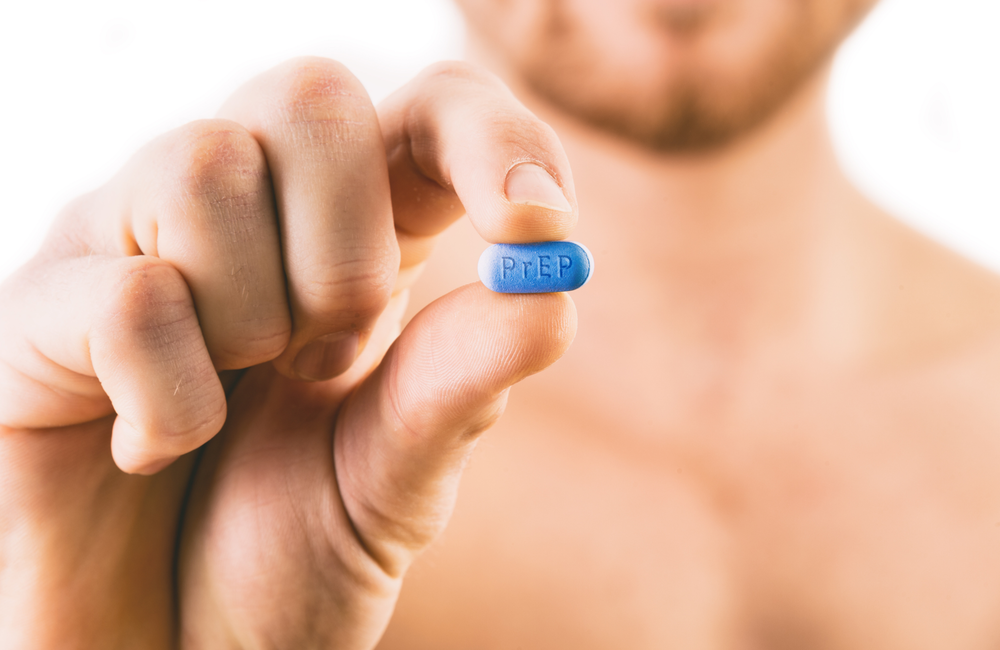
New HIV diagnoses in gay and bisexual men fell by 20% after the implementation of a publicly funded PrEP programme in Scotland, while HIV incidence in a large cohort of men attending sexual health clinics fell by 43%, Professor Claudia Estcourt of Glasgow Caledonian University and colleagues report in AIDS.
“We show that it is possible to achieve important reductions in HIV incidence in men who have sex with men when PrEP is implemented within routine care,” the researchers say. “Our findings suggest that PrEP can make a wider contribution, alongside other prevention interventions, in reducing population level risk of HIV for those not on PrEP.”
In July 2017, Scotland became one of the first countries to implement a national PrEP programme. The service is delivered nationwide within NHS sexual health clinics and no additional funding was provided. Adherence support, kidney monitoring and STI testing are offered alongside the medication, free of charge to residents over the age of 16 who fulfil one of the following eligibility criteria: being a sexual partner of an HIV-positive person who has a detectable viral load; having a bacterial rectal STI in the past year; reporting condomless anal sex with two or more partners in the past year; or being at “equivalent high risk of HIV acquisition”, as agreed by a clinician.
Although the last criterion was intended to allow for enrolment of people in a diverse range of situations – including women, heterosexual men, people from African communities, transgender people and people who inject drugs – only 2% of the people who have taken PrEP so far are not gay and bisexual men.
Estcourt and colleagues looked at national surveillance data from Scottish sexual health services, comparing the two years before PrEP (July 2015 to June 2017) and the two years of its availability (July 2017 to June 2019).
Of 16,723 gay and bisexual men who attended in the two years after PrEP became available, 3256 were prescribed PrEP at least once. The strongest predictors of being prescribed PrEP were having had a post-exposure prophylaxis (PEP) prescription in the previous year, having had an STI in the previous year, and ever injecting drugs. Men under the age of 24 and men who had not used a sexual health clinic in the past two years were less likely to receive PrEP.
HIV diagnoses among gay and bisexual men were steady in the four years before PrEP (234 in 2013-2015; 229 in 2015-2017) but fell by 20% in the two years of PrEP (184 in 2017-2019).
Diagnoses of recent HIV infections, estimated to have occurred in the previous three or four months, were 61, 73 and 47, respectively.
To calculate HIV incidence, the researchers specifically looked at the 12,276 gay and bisexual men who had at least two HIV tests recorded on the national electronic patient record system during the study period.
Incidence was 0.51% a year before PrEP, then 0.32% a year after PrEP – a 43% fall.
Among those who had been prescribed PrEP at least once, incidence fell by 75%. (There were four HIV diagnoses in men who had been prescribed PrEP at least once, but were not taking it at the time of infection.) But incidence also fell by 32% among men who had never taken PrEP, suggesting that PrEP users remaining HIV negative had benefits for their sexual partners too.
The largest reduction in incidence was seen in men who had recently either had a PEP prescription or a rectal STI. Over a third of this group took PrEP. In the period before it became available, incidence was 1.1% a year, but this fell to 0.2% for men taking PrEP – an 83% fall.
While other factors could have contributed to the fall in incidence, Estcourt and colleagues believe PrEP is the most important factor. The proportion of people with HIV who had an undetectable viral load only increased modestly during this time period and there is no reason to believe that condom use became more frequent.
The next challenge will be to bring these benefits to a wider and more diverse population. Before PrEP, approximately half of Scotland’s HIV diagnoses were in gay and bisexual men, 30% in heterosexual men and women, and 15% in people who inject drugs.
A separate analysis published in Sexually Transmitted Infections shows that the Scottish PrEP programme’s greater success in reaching some groups than others is leading to a shift in the profile of people newly diagnosed with HIV in Scotland. The researchers compared individuals diagnosed in the two years before PrEP and the first year after.
“We show that it is possible to achieve important reductions in HIV incidence in men who have sex with men when PrEP is implemented within routine care.”
Before, newly diagnosed people were more likely to be male (82% versus 72%), gay and bisexual men (52% vs 41%), White British (78% vs 64%) and to have acquired HIV in Scotland (72% vs 58%). After PrEP, the proportion who acquired HIV through heterosexual sex increased (27% vs 39%). There were no statistically significant changes in terms of age, geography or neighbourhood deprivation.
“The PrEP programme primarily benefited indigenous white men who have sex with men, arguably a group with easily identifiable, ongoing risk factors for HIV acquisition,” Dr Ceilidh Grimshaw and colleagues say.
They note that PrEP is only provided in sexual health clinics (which not all potential users attend), awareness of PrEP was raised through community activism rather than official campaigns (favouring gay men and those with more health literacy) and the official eligibility criteria were based in part on characteristics specific to gay and bisexual men.
“Alternative PrEP delivery models, within combination prevention approaches in a variety of settings potentially including primary care, together with culturally relevant information dissemination, are required if we are to eliminate HIV transmission across the population,” they conclude.
